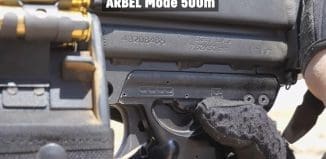What Caused Decrease in Military Drone Purchase?
This post is also available in:  עברית (Hebrew)
עברית (Hebrew)
Will the US decrease its reliance on drones in future wars? In fact, new Pentagon documents show the military plans to invest next year in the lowest number of new drones in more than a decade.
The ability of drones to exceed prior limits imposed on manned aircraft and to attack US adversaries without risking warfighters has been emphasized by previous administrations, and also helped obscure involvement in foreign conflicts.
However, the Trump administration’s stated intention of withdrawing from costly and deadly Middle East wars and instead concentrate on the resurging great power competition with China and Russia, is driving a focus on other technologies. War on that scale and against adversaries with comparable technology would require other kinds of weapons, budget experts say.
Each of the major drone programs listed in the latest budget proposal the Pentagon compiled calls for purchasing fewer aircraft compared to at least the previous two years, including the MQ-1 Predator that was the original workhorse for conflict zones in the global war on terror, the larger and faster MQ-9 Reaper that will replace it, and the highly sophisticated – and singularly expensive – RQ-4 Global Hawk that represents part of the future of unmanned warfare, according to usnews.com.
“Procurement of unmanned systems is an excellent litmus test, because these systems have been integral to operations in Iraq, Afghanistan and elsewhere over the last 20 years,” Travis Sharp, an analyst at the Center for Strategic and Budgetary Assessments, says, according to aul.com.
However, present circumstances still mean the demand for drones remains high. Military commanders operating across the globe, from the Pacific to the Middle East to Europe to the Caribbean, say they need more of the surveillance, reconnaissance and intelligence-gathering capabilities that drones offer.
In some instances, a reduction in planning drone purchases is not a surprise. The Air Force announced in 2017 its plans to retire the MQ-1 Predator drone – the first platform that the military armed and employed for extended operations on a major battlefield. That decision likely explains why the military only plans to buy six versus 10 of the unmanned aircraft in fiscal 2019 and 20 of them the year before.
Other drones in which the military is investing heavily for the future, such as the Navy’s MQ -4 Triton or the Air Force’s RQ-4 Global Hawk, cost more than half a billion dollars each, which amid tightening budgets is perhaps why the services have requested buying only two this year, compared to three in each of the last two years.






























